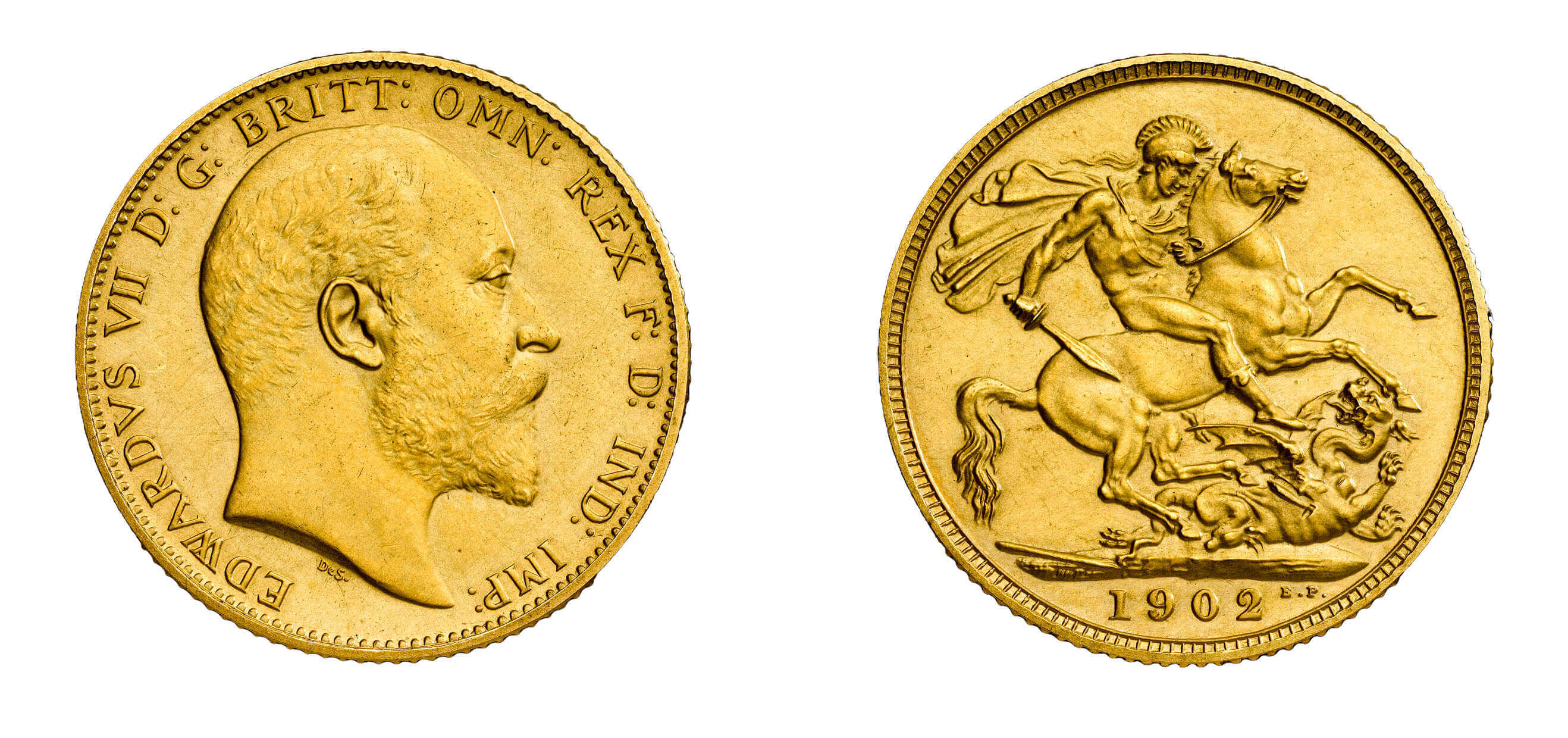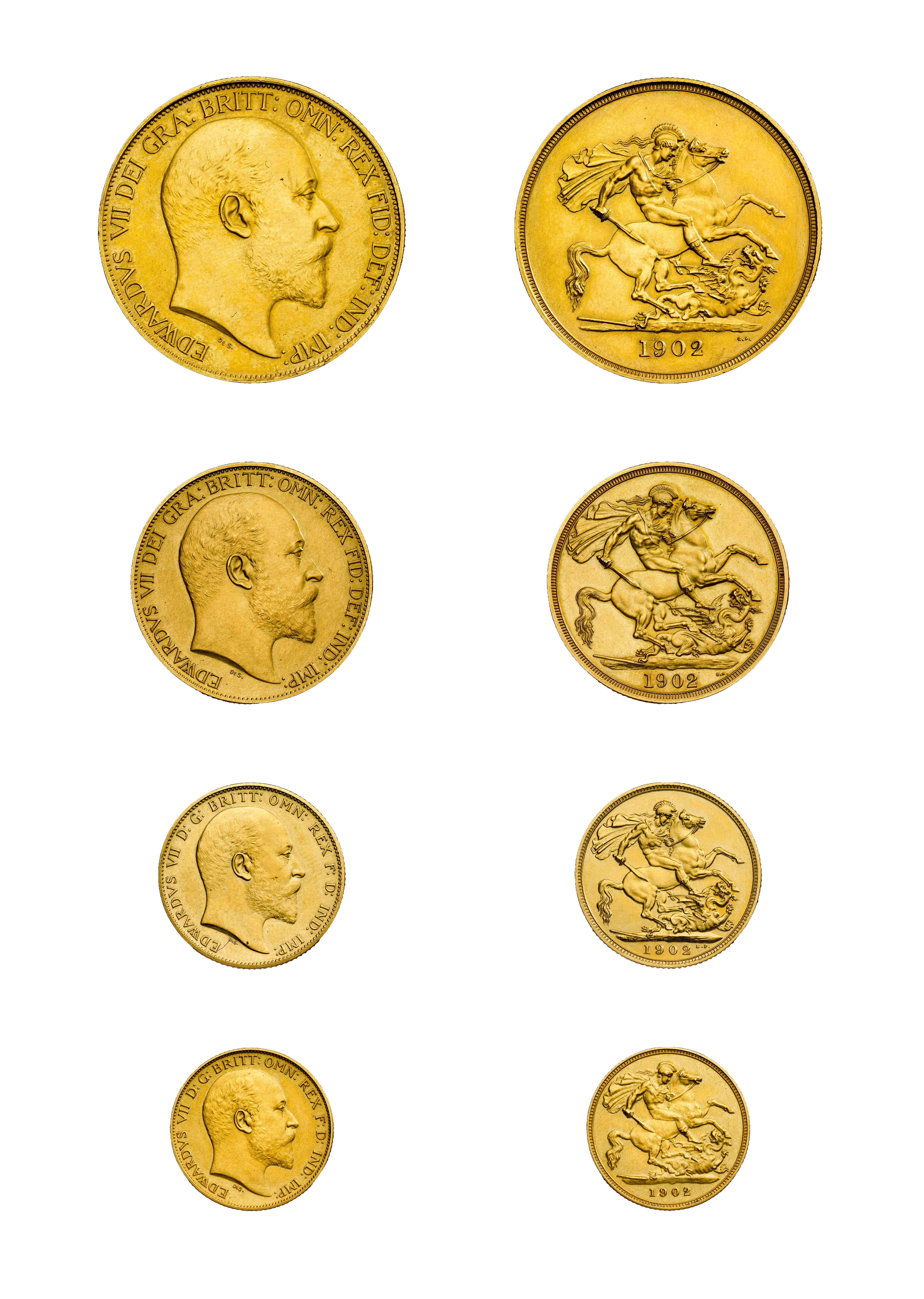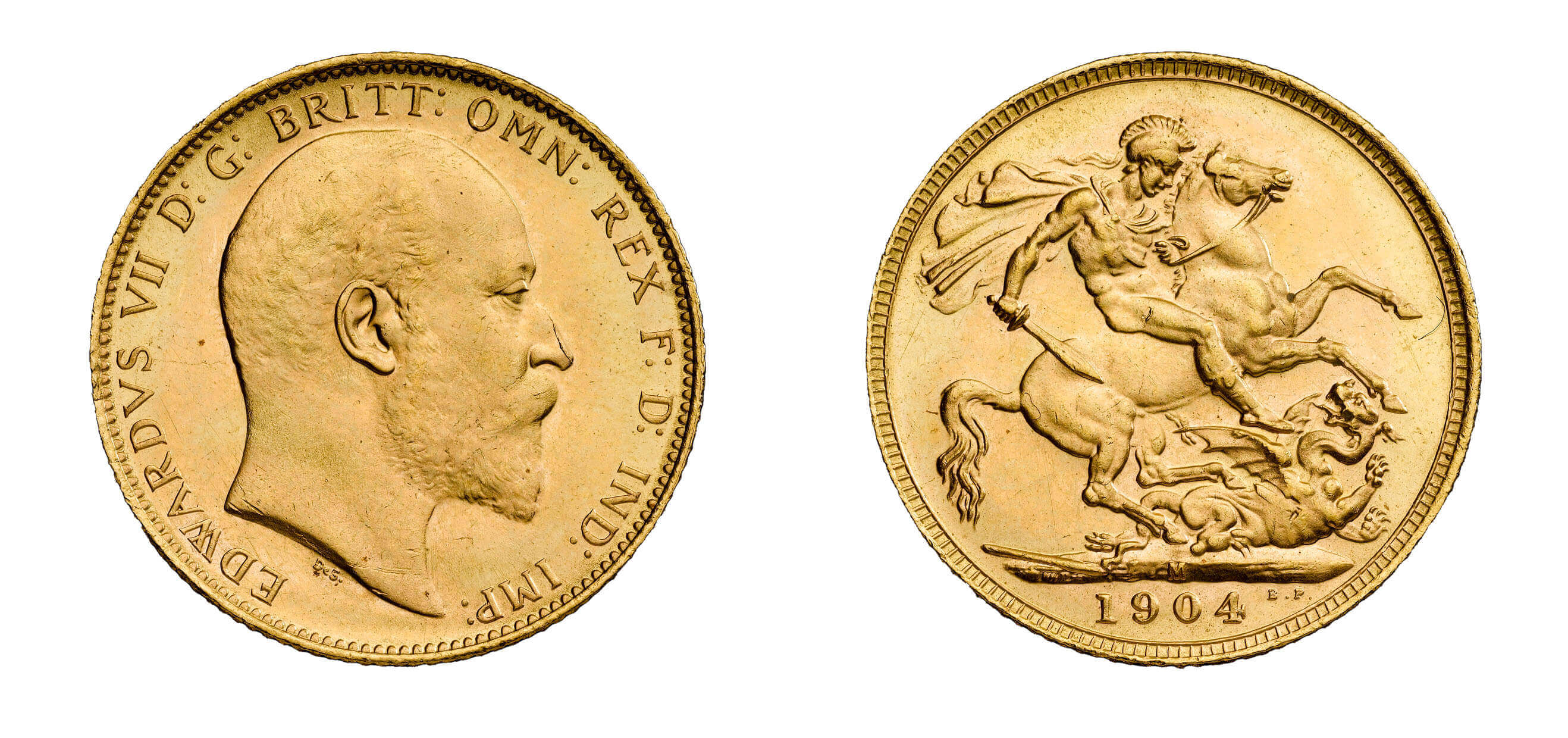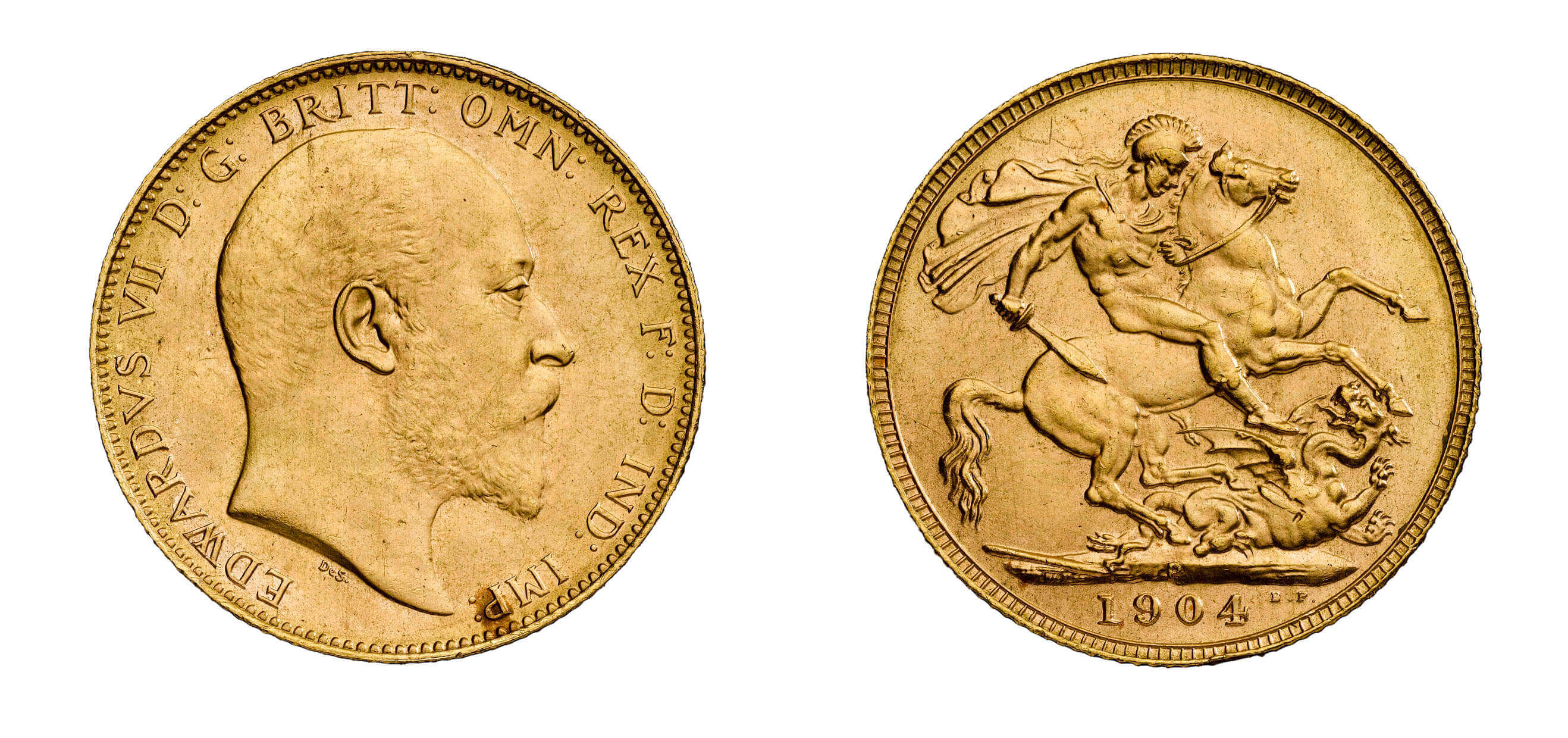The Model of Accuracy
In the early twentieth century, the UK’s gold coinage had become a source of national pride. Legislation enacted towards the end of Queen Victoria’s reign had led to the routine replacement of underweight sovereigns, making the coin a model of mass-produced accuracy and largely free of counterfeits. Prior to the outbreak of the First World War, the Deputy Master of the Royal Mint could therefore justifiably claim that the gold coinage was ‘one of the pre-eminent features of British currency’.

Edward VII sovereign (RMM192)
The reverse of the sovereign continued to feature Benedetto Pistrucci’s St George and the dragon design and the highly respected engraver George William De Saulles developed a distinguished portrait of Edward VII for the obverse. First engaged to work on the dies for the new issue of coins in 1893, he was already a talented medallist who had spent much of his career working in Birmingham before joining the Royal Mint. It is De Saulles’ taste and medallic art background that may well be responsible for the matt proof sovereigns in sets dated 1902. Achieved by a special treatment of the dies, some artists considered these coins more attractive than the traditional treatment of proof coins, as many believed the reflection of a polished surface obscured the fine detail of the design. Despite the perceived artistic merits of the treatment, the sets were never as popular as those that had the traditional finish and in 1911, when proof sets became available to the public once more, the matt effect was abandoned.

Edward VII sovereign family (matt proof). Quintuple sovereign (RMM182), double sovereign (RMM186), sovereign (RMM191), half-sovereign (RMM204)
A Global Reach
Production of sovereigns continued at Sydney, Melbourne and Perth during Edward’s reign. The design used on these coins was the same as those struck in London except for the inclusion of a small mint mark on the reverse.

Edward VII sovereign (RMM195) featuring Melbourne 'M' mintmark on reverse

Edward VII sovereign (RMM196) featuring Perth 'P' mintmark on reverse
With the discovery of gold in the Yukon in 1900, the Canadian Government expressed a wish for the right to produce sovereigns. A year later, the Canadian House of Commons resolved to fund a branch of The Royal Mint in Ottawa; the building work began in 1905 with the first coins struck in 1908. As with the Australian branch mints, the coins struck in Ottawa were identical to those produced in London, save for the inclusion of a small letter C in the ground beneath St George, although the minting of sovereigns in Ottawa were never extensive.
Did You Know?
• At the state opening of parliament, the Lady or Gentleman Usher of the Black Rod carries a rod of office which holds a 1904 sovereign in its base.
• As a high-value, circulating coin, it would have been common to find machines in prestigious restaurants, clubs or first-class lounges in which sovereigns could be exchanged for smaller change.
• Branch mints accounted for the production of approximately 40% of the circulating sovereigns in the UK at the start of the twentieth century.

